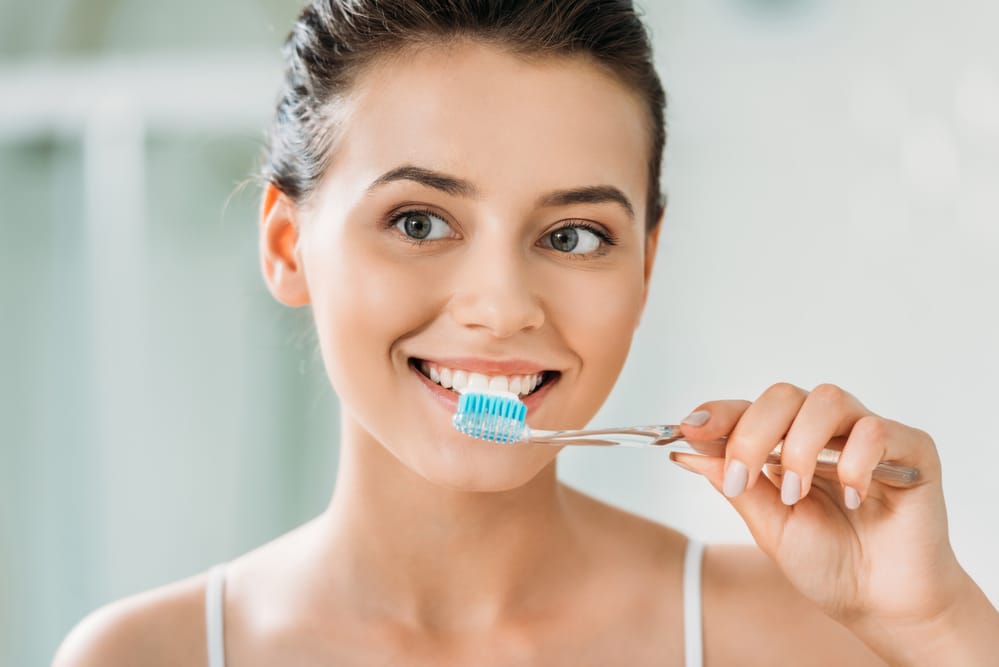
It’s common practice for people to brush their teeth daily. But why is it essential to keep the teeth and gums clean? Why is a basic oral hygiene routine important? Beyond fresh breath, here are four reasons why brushing up impacts daily life.
1. Maintain Overall Wellness
Simple at-home oral hygiene routines and professional dental cleanings help patients reduce bacterial overgrowth, the leading cause of gum disease. Periodontal (gum) disease is a multi-stage infection that damages the supporting structures that secure teeth in place.
For quite some time, medical professionals and researchers worldwide have recognized the relationship between the mouth and the rest of the body. Because the mouth is the bacterial gateway to the rest of the body, keeping it clean and free of periodontal disease may reduce the progression of inflammatory, systemic diseases, including:
- Diabetes
- Respiratory diseases
- Cardiovascualar diseases
- Certain cancers
- Alzheimer’s disease
It’s noteworthy to understand that gingivitis (the initial stage of gum disease) is reversible with root planing and scaling. However, breakthroughs in dental laser technology are here, and mild to moderate periodontitis treatment can be swift and require a short recovery period.
2. Tooth Loss Prevention
The American College of Prosthodontics reports that about 178 million Americans are missing at least one tooth, and the likelihood of becoming toothless increases with maturity.
Aside from age, did you know that insufficient oral hygiene is commonly linked to tooth loss? Among the most common reasons for missing teeth, cavities and periodontal disease are included. Twice daily and thorough brushing and flossing can help remove common oral bacteria strains that lead to dental infections.
3. Impact on Romantic Relationships
Even though many believe that “love conquers all,” bad breath can quickly spoil the fun out of any relationship. According to a Delta Dental survey conducted in 2016, 74% of women and 68% of men consider good oral health one of the most attractive qualities in a significant other. Keep your partner satisfied by maintaining excellent oral health.
4. Influence Female Fertility
Also, researchers at the European Society of Human Reproduction and Embryology discovered that women with gum disease struggled with fertility. In this study, women suffering from periodontal disease took an additional two months to get pregnant on average.
Additionally, periodontal disease in pregnant women is associated with other pregnancy problems, such as:
- Gestational diabetes
- Premature birth
- Miscarriage
Experience Innovative Techniques that Can Improve Oral Hygiene
In addition to social norms, the main motivations behind people keeping their teeth and gums clean are to prevent disease and dental decay, which can lead to negative, sometimes irreversible side effects. Besides daily brushing and flossing, regular dental appointments can help people manage their oral health. Consider gentle laser dentistry if you are like many Americans who fear going to the dentist because of drills and outdated procedures.
At Austin Laser Dentist, Dr. Helen Ragsdale uses laser technology to skillfully diagnose and treat consequences of poor oral hygiene and offers upscale therapies such as:
- Cavity detection and diagnosis
- Periodontal disease treatment
- Root canal therapy and infected dental tissue removal
If you haven’t visited the dentist in over six months or believe that you may be experiencing a cavity, gum infection, or other ailments related to neglected oral hygiene, book a comprehensive dental cleaning and oral hygiene exam with us. Call (512) 346-4690 or schedule an appointment online at your earliest convenience.




